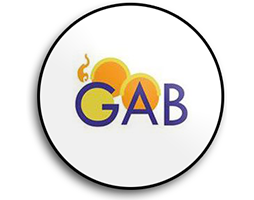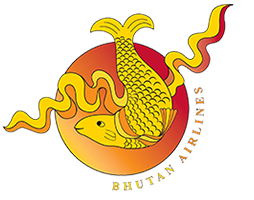


Mobile : +975-77111298, +975-77111298
Email: info@greenbhutantours.com
Website:
LOCATIONS COVERED : thimphu-punakha-paro-Shana–Soi Thangthangkha-angothang – Lingshi-Shodu – Barshong-Dolam Kencho
| Package Duration : 12 | ||
|---|---|---|
| Day 1 : Arrive Paro | ||
| The flight to Paro is one of the most spectacular in entire Himalayas. Whether flying along the Himalayan range from Kathmandu or over the foothills from Kolkatta, the journey offers fascinating views and an exciting descent into the Kingdom. Bhutan’s first gift, as you disembark from the aircraft will be cool, clean fresh mountain air. After immigration formalities and baggage collection, you will be met by our representative, and afterwards transfer to the hotel. Situated in north-western part of the country, the wide and fertile Paro valley has both an ancient and modern face. It is home to some of the most revered temples in the Kingdom and at the same time also boasts Bhutan’s only international airport. With its annual bounties of paddy, Paro is justly considered to be the rice bowl of the country. Afternoon visit to Rinpung Dzong, meaning (‘fortress of the heap of jewels’), which has a long and fascinating history. Along the wooden galleries lining the inner courtyard are fine wall paintings illustrating Buddhist lore such as four friends, the old man of long life, the wheel of life, scenes from the life of Milarepa, Mount. Sumeru and other cosmic Mandala. Part of Bernardo Bertolucci’s movie, ‘Little Buddha,’ was filmed inside this dzong. Then drive to pay respect to 7th century Kyichu Lhakhang. It is said to be one of the 108 temples built by Buddhist King of Tibet, Songtsen Gampo, to subdue a demoness who sprawled across the entire Himalayan region and prevented the spread of Buddhism. The temple complex has a magical orange tree that bear fruits all year round. Evening an exploratory walk around main street and market area. Overnight at the hotel in Paro. (Altitude 2280m) | ||
| Day 2 : Paro | ||
| After breakfast, embark on a walking excursion to Taktshang Monastery (approx. 5 hours, round trip walk), a cluster of temples clinging to the edge of an impossibly steep and rocky cliff, seeming to hang in space some 900 metres above the valley. The sites owes its sanctity to the belief that Guru Padmasambhava came here in the eight century flying on a tigress and meditated at this monastery and hence it is also called ‘Tiger’s Nest’. This site has been recognised as a most sacred place and visited by all Bhutanese at least once in their lifetime. Later in the afternoon, visit Ta Dzong, a 17th century watchtower above the Paro Dzong that now houses the National Museum. It features an excellent collection of Bhutanese antiquities and treasures (including the King’s famous ‘dragon hat), an interesting assortment of costumes from the different regions of Bhutan, and a wonderful collection of painted and embroidered Thangkhas (religious pictures). Then visit to Dungtse Lhakhang, built–unusually for a temple-in the shape of a chorten. Inside Dungtse Lhakhang are the most remarkable collection of mural paintings, representing the deities of the Drukpa Kagyupa school of Buddhism, the official religion of Bhutan. These murals and their colours perfectly preserved because the interior is always dark, are believed to be the finest in Bhutan. Then continue towards north-western end of the Paro valley which is dominated by views of Mt. Chomolhari (7314m) and picturesque ruins of Drukgyel Dzong, destroyed in devastating fire of 1951. Built to commemorate a famous victory over the Tibetans in 1644, the ruins are now an idyllic spot, shaded by ancient cypress trees. Besides it is a giant water-driven prayer wheel, making the route of the old mule track to Tibet. Nearby we will also see the beautiful typical farm house. Bhutanese farmhouses are very colorful, decorative and traditionally built without the use of single nail. The majority of the population of Bhutan continues to live as it has for centuries – in small isolated farms and hamlets, surrounded by terraced fields of rice, maize and buckwheat. Overnight at the hotel in Paro. (Altitude 2280m) | ||
| Day 3 : Paro – Shana 14 km, 4 – 5 hours walk | ||
| The trek starts from ruins of Drukgyel Dzong (2,580m) with a short downhill walk on a wide trail. The trail then climbs gently through well maintained rice terraces and fields of millet. Later on we come to apple orchards and forests. Soon the valley widens and we reach the army post of Gunyitsawa (2,810m). This is the last stop before Tibet. We continue upwards to just beyond Shana Zampa (2,870m), where there are several good camping places in meadows surrounded by trees. Overnight camp at 2,870m. | ||
| Day 4 : Shana – Soi Thangthangkha, 20 km, 7 – 8 hours walk | ||
| We’ll continue up through the Pa Chhu (Paro river) which gradually narrows as the trail leads higher, winding up and down through pine, oak and spruce forests. After crossing a bridge to the left bank of the river, we stop for a hot lunch. Then we continue along the river, climbing upwards through rhododendron forests and crossing the river once more before reaching our campsite. Overnight camp at 3,750m. | ||
| Day 5 : Soi Thangthangkha – Jangothang, 19 km, 5 – 6 hours walk | ||
| The path ascends for a while till you reach a small army camp and chorten. We then follow the river above the tree line, enjoying the stunning views of Mount. Chomolhari and Jichu Drake. Hot lunch is served at a yak herder’s camp. A short walk from here into the valley will takes us to our campsite at Jangothang (Chomolhari Base Camp), situated below ice- covered east face of Chomolhari. Overnight camp at 4,040m. | ||
| Day 6 : Jangothang – Lingshi, 18 km, 7 – 8 hours walk | ||
| The trail follows the stream for half an hour and crosses the bridge to the right bank. We now start our climb up to the first ridge, enjoying breathtaking view of Mt. Chomolhari, Jichu Drake and Tsrim Khang. The trail then takes us across a fairly level valley floor until the climb to the Nyele-la (4,700m). We descend gradually from the pass to our campsite at Lingshi (4,000m), enjoying the panoramic view of the mountain peaks and Lingshi Dzong as we walk. The Dzong was built in 1668 to protect villages in this region from Tibetan invasion and it continues to be the administrative centre of the region. Overnight camp at 3,800m | ||
| Day 7 : Lingshi – Shodu, 22 km, 8 – 9 hours walk | ||
| Today is the toughest day of our trek. The Laya – Gasa route leaves the Chomolhari trek route here. Our trail climbs up towards a small white chorten on a ridge above the camp, then turns south up the deep Mo Chu valley. The trail stays on the west side of this largely treeless valley, climbing steeply a short distance above the Mo Chu. It then crosses the river, and climbs steeply for two hours to Yeli-la pass (4,820m). On a clear day, you can see Mount. Chomolhari, Gangchhenta, Tserim Khang and Masang Gang from this pass. Descend alongside a stream to a rock shelter in the cliff face, and then continue on downstream till reaching Shodu (4,100m), where we will camp in a meadow with a chorten in it. Overnight camp at 4,100m. | ||
| Day 8 : Shodu – Barshong, 16 km, 6 – 7 hours walk | ||
| We are now back at the tree line, and out path follows the course of the Thimphu Chhu (river), descending through rhododendron, juniper and mixed alpine forests. There are stunning views of rocky cliff faces and waterfalls along the way equally amazing. We stop at the riverside for a hot lunch. Then the trail takes us gradually upwards to the ruins of Barshong Dzong, near which we camp for the night. Overnight camp at 3,600m. | ||
| Day 9 : Barshong – Dolam Kencho, 15 km, 5 – 6 hours walk | ||
| The trail descends gently through a dense forest of rhododendron, birch and conifers, then drops steeply to meet Thimphu Chh (river). The trail runs along the left bank of the river, climbing over ridges and descending into gullies where side streams runs down into the river. The final stage of the trail climbs around a cliff face high above the Thimphu Chu river, coming out onto pastureland at Dolam Kencho at 3,300m. Our transport will meet us here and we’ll drive for approx one hour to reach our hotel in Thimphu. Overnight at the hotel in Thimphu (Altitude 2,320m). | ||
| Day 10 : Thimphu | ||
| After breakfast, sightseeing in Thimphu valley including visit to the following : the National Library, housing an extensive collection of priceless Buddhist manuscripts; the Institute for Zorig Chusum (commonly known as the Painting School) where students undergo a 6-year training course in Bhutan’s 13 traditional arts and crafts, Textile Museum; established in 2001 and showcases range of beautiful Bhutanese textiles, Folk Heritage Museum; providing a fascinating insight into the traditional Bhutanese farmhouse and rural past through its exhibits. After lunch, visit to Changangkha Lhakhang. It is a fortress like temple and monastic school perched on a ridge above Thimphu, south of Motithang. The temple was established in 12th century on a site chosen by Lama Phajo Drugom Shigpo, who came from Tibet. The central statue here is Chenrezig in a manifestation with 11 heads. From temple courtyard, there is fascinating view of Thimphu valley. Afterwards drive to Buddha Point (Kuensel Phodrang). You can pay your obeisance and offer prayers to the Buddha, the largest statue in the country and then walk around and take a glimpse of the valley. Then visit, King’s Memorial Chortencontinuously circumambulated by people, murmuring mantras and spinning their prayer wheels. Construction of this landmark was the idea of Bhutan’s third king, His Majesty Jigme Dorji Wangchuk (‘the father of modern Bhutan’) who has wished to erect monument to world peace and prosperity. Completed in 1974 after his untimely death, it serves both as a memorial to the Late King and as a monument to peace. Conclude the day with visit of Trashichhoedzong. This impressive fortress/monastery houses Secretariat building, the throne room of His Majesty, the King and various government offices. It is also the summer residence of Chief Abbot and central monk body. Overnight at the hotel in Thimphu. (Altitude 2320m) | ||
| Day 11 : Thimphu – Punakha & Wangdue – Paro (200km, approx 6 hours drive) | ||
| After breakfast drive up to Dochu-la pass (3,088m/ 10,130 ft) stopping briefly here to take in the view and admire the chorten, mani wall, and prayer flags which decorate the highest point on the road. If skies are clear, the following peaks can be seen from this pass (left to right): Masagang (7,158m), Tsendagang (6,960m), Terigang (7,060m), Jejegangphugang (7,158 m ), Kangphugang (7,170 m ), Zongphugang (7, 060 m ), a table mountain that dominates the isolated region of Lunana – finally Gangkar puensum, the highest peak in Bhutan at 7,497m. At Dochula Pass, 108 chortens or stupas known as Druk Wangyal Chortens have been built by Ashi Dorji Wangmo Wangchuk, the eldest Queen Mother. These chortens are built in three layers, the first lowest level layer has forty five chortens, the second has thirty six and the top layer has twenty seven, built around the main chorten. Arrive Punakha and visit Punakha Dzong or (‘Palace of Great Happiness’), built at the junction of the Phochu and Mochu rivers in 1637 by Shabdrung Ngawang Namgyal. This majestic dzong served as both the religious and the administrative center of Bhutan in the past. It measures some 600 by 240 feet and has a six-story, gold-domed tower. Inside are courtyards and religious statuary that hint at the depth of history and spiritual tradition embodied here. Your guide will illuminate your understanding of this intricate culture that is exotic to us, though long established here. Then embark on an interesting excursion to Chimi Lhakhang. This Lhakhang, situated on a hillock in the centre of the valley, is also known as the temple of fertility. It is widely believed that couples who do not have children and wanting one, if they pray at this temple, they are usually blessed with a child very soon. The trail leads across rice fields to the tiny settlement of Pana, meaning ‘field’. A walk through the village near the temple will give you rare glimpse into the daily life of the village folks. Later after exploring Wangduephodrang town, drive back to to Paro descending down from Dochu La, following the way back up the dramatic Wang Chhu and Paro Chhu river valleys, before crossing through Paro town towards the north end of the valley. En route as the time permit, take a short to visit Simtokha Dzong, the place of profound tantric teaching. This oldest dzong of the country built in 1627, now houses a school for the study of the Dzongkha language. Overnight at the hotel in Paro (Altitude 2,280m). | ||
| Day 12 : Depart Paro | ||
| After breakfast at the hotel, drive to the airport for flight to your onward destination. Our representative will help you with exit formalities and then bid you farewell. | ||
| Cost Includes |
|---|
|
| Cost Excludes |
|
11 Night / 12 Days
Package Type: TREKKING IN BHUTAN
PER PERSON INR







Copyright © Druk Bayuel Tours. All Rights Reserved 2020.
Designed and Developed By Mywebsitedeals.com ( a unit of Traveltourister.com )